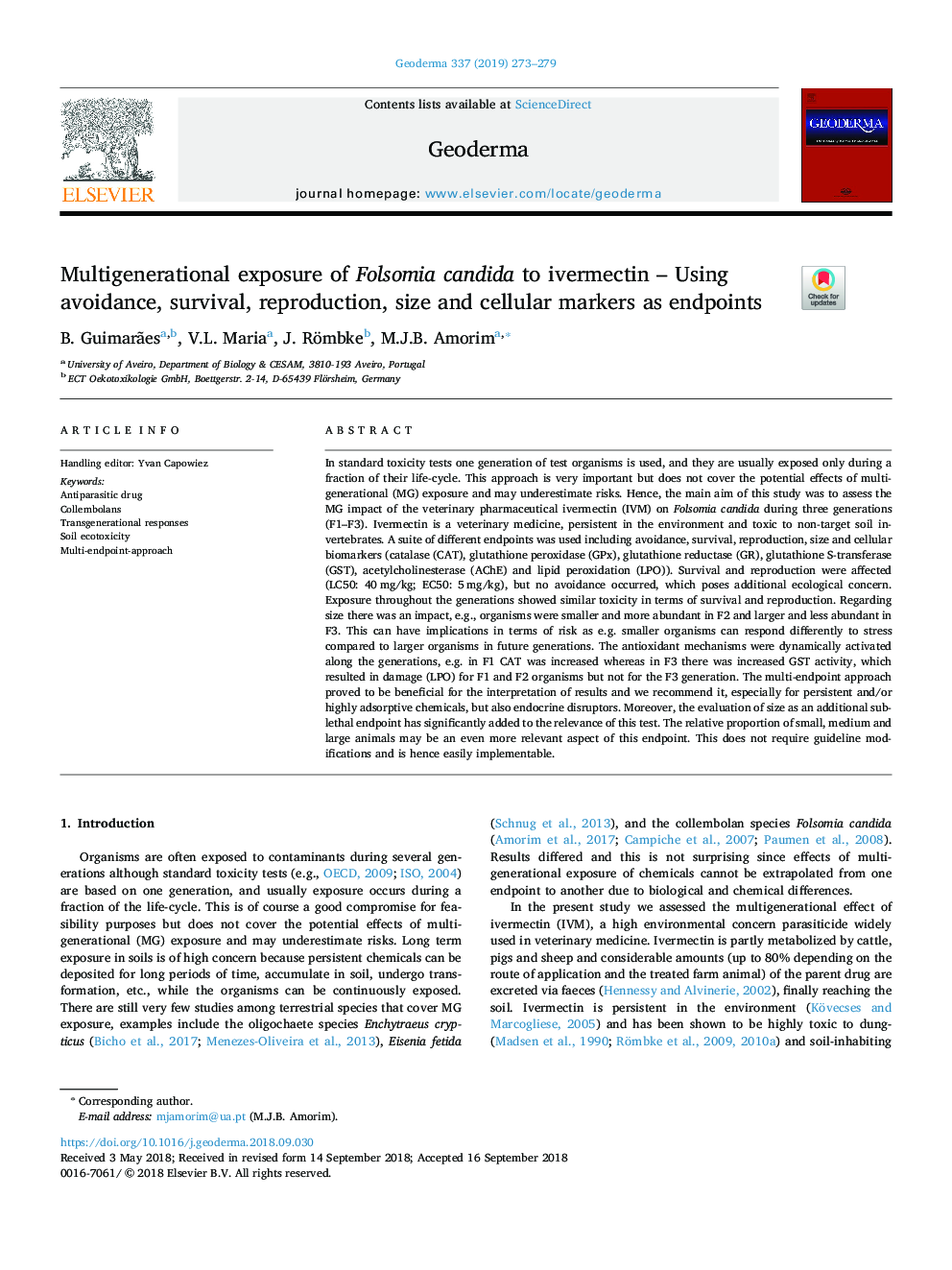| کد مقاله | کد نشریه | سال انتشار | مقاله انگلیسی | نسخه تمام متن |
|---|---|---|---|---|
| 10224010 | 1701069 | 2019 | 7 صفحه PDF | دانلود رایگان |
عنوان انگلیسی مقاله ISI
Multigenerational exposure of Folsomia candida to ivermectin - Using avoidance, survival, reproduction, size and cellular markers as endpoints
دانلود مقاله + سفارش ترجمه
دانلود مقاله ISI انگلیسی
رایگان برای ایرانیان
موضوعات مرتبط
مهندسی و علوم پایه
علوم زمین و سیارات
فرآیندهای سطح زمین
پیش نمایش صفحه اول مقاله

چکیده انگلیسی
In standard toxicity tests one generation of test organisms is used, and they are usually exposed only during a fraction of their life-cycle. This approach is very important but does not cover the potential effects of multigenerational (MG) exposure and may underestimate risks. Hence, the main aim of this study was to assess the MG impact of the veterinary pharmaceutical ivermectin (IVM) on Folsomia candida during three generations (F1-F3). Ivermectin is a veterinary medicine, persistent in the environment and toxic to non-target soil invertebrates. A suite of different endpoints was used including avoidance, survival, reproduction, size and cellular biomarkers (catalase (CAT), glutathione peroxidase (GPx), glutathione reductase (GR), glutathione S-transferase (GST), acetylcholinesterase (AChE) and lipid peroxidation (LPO)). Survival and reproduction were affected (LC50: 40â¯mg/kg; EC50: 5â¯mg/kg), but no avoidance occurred, which poses additional ecological concern. Exposure throughout the generations showed similar toxicity in terms of survival and reproduction. Regarding size there was an impact, e.g., organisms were smaller and more abundant in F2 and larger and less abundant in F3. This can have implications in terms of risk as e.g. smaller organisms can respond differently to stress compared to larger organisms in future generations. The antioxidant mechanisms were dynamically activated along the generations, e.g. in F1 CAT was increased whereas in F3 there was increased GST activity, which resulted in damage (LPO) for F1 and F2 organisms but not for the F3 generation. The multi-endpoint approach proved to be beneficial for the interpretation of results and we recommend it, especially for persistent and/or highly adsorptive chemicals, but also endocrine disruptors. Moreover, the evaluation of size as an additional sub-lethal endpoint has significantly added to the relevance of this test. The relative proportion of small, medium and large animals may be an even more relevant aspect of this endpoint. This does not require guideline modifications and is hence easily implementable.
ناشر
Database: Elsevier - ScienceDirect (ساینس دایرکت)
Journal: Geoderma - Volume 337, 1 March 2019, Pages 273-279
Journal: Geoderma - Volume 337, 1 March 2019, Pages 273-279
نویسندگان
B. Guimarães, V.L. Maria, J. Römbke, M.J.B. Amorim,